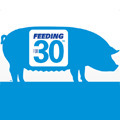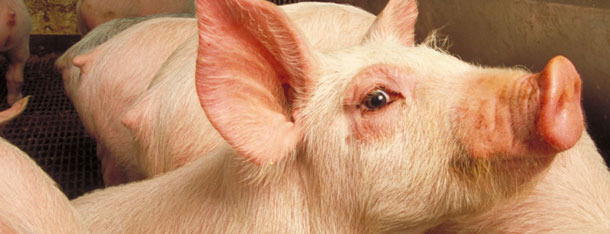 Because newborn pigs are the future of any farrow-to-wean/finish operation, cases of pre-weaning mortality can be detrimental to an operation’s long-term bottom line. Providing proper care and nutrition to sows during the gestation and farrowing periods plays a pivotal role in promoting litter performance.
Because newborn pigs are the future of any farrow-to-wean/finish operation, cases of pre-weaning mortality can be detrimental to an operation’s long-term bottom line. Providing proper care and nutrition to sows during the gestation and farrowing periods plays a pivotal role in promoting litter performance.
Current industry estimates state that 12.9 percent of pigs born live die prior to weaning. To decrease pre-weaning mortality rates, producers must prepare their sows for the next lactation before they enter the farrowing room.

Dan McManus, DVM, swine nutrition specialist for Purina Animal Nutrition LLC, says a healthy litter results from the overall care provided to the sow during gestation. After a sow weans a litter, nutritional energy supports piglet growth in-utero as well as the rebuilding of the sow’s body condition. Because sows require significant nutrients during this period, McManus encourages producers to feed ad libitum rations to sows post-weaning. In his experience, these sows will be able to consume approximately 6 pounds of feed per sow per day.
“Proper nutrient levels are crucial during this period,” he says. “The gestation ration sets the sow up for her next lactation and determines the level of litter growth in-utero.”
The length of gestation also impacts litter health and the probability of Full Potential Pigs produced by each sow. Purina Animal Nutrition LLC defines Full Potential pigs as pigs that reach 8 or more pounds at weaning. McManus encourages producers who induce labor to not do so until day 116 of gestation. A suitable gestation period can promote heavier birthweights.

“Most of today’s genetics will average 116 days of gestation length,” he explains. “Allowing pigs to stay in the sow to that point will improve birthweight, as pigs grow between 0.1 and 0.2 pounds per head per day in the sow the last week of gestation. Secondly, colostrum antibodies will increase in the sow as gestation length goes from day 113 to 116.”
Colostrum antibodies are very important, because high quality colostrum provides newborn pigs with immune protection. Pigs that receive adequate levels of high quality colostrum will also better transition into the feeding period. Many farms are now providing 24 hour care in the farrowing rooms to ensure that each piglet receives colostrum and gets off to a good start.
In addition to the power of quality colostrum, McManus has found that sanitation of the farrowing facility and herd management enhances herd health. “Most farms with low pre-wean mortality practice strict all-in all-out production in their farrowing rooms and never move older pigs back into rooms with younger pigs,” he says. “These producers have excellent cleaning, disinfection and sanitation practices so pregnant animals arrive to a farrowing room environment with minimal stress.”
McManus adds that producing healthy pigs that have the ability to reach their full potential at weaning requires a complete management strategy. “Healthy litters begin with proper sow management and quality nutrition programs in gestation,” he says. “Proper management and quality rations must then continue through lactation.”
December 10, 2012 - Feeding for 30



